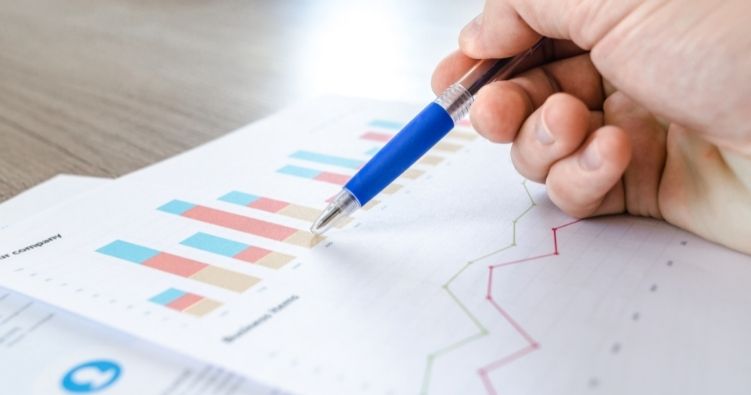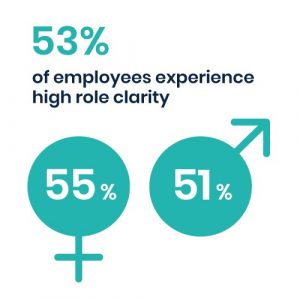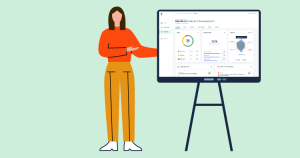Improve retention, optimize performance, and reduce unnecessary costs by harnessing the power of predictive HR analytics.
What is predictive people analytics?

Human resources analytics are increasingly recognized as an essential part of employee management, and their quantifiable outcomes can be seen in many different areas. Predictive HR analytics specifically helps management find patterns in employee behavior to gain insights and inform their decision-making.
Effectory promotes a data-based approach so that organizations can make strategic choices when it comes to hiring, developing HR initiatives, and creating a positive work environment. The underlying goal is to boost performance, improve employee engagement, and increase productivity.
This article will explore what predictive people analytics is and its potential benefits. It will also provide suggestions on how to use predictive HR analytics and data mining to help your organization excel.
What is predictive people analytics?
To understand predictive people analytics, you first need to have a grasp of what people analytics is. You may also hear “people analytics” used synonymously with terms like “HR analytics,” “HR data mining,” or “workplace analytics.” Let’s take a look at the definition.
According to research company and consultant Gardner, “people analytics is the collection and application of talent data to improve critical talent and business outcomes. People analytics leaders enable HR leaders to develop data-driven insights to inform talent decisions, improve workforce processes, and promote positive employee experience.” Data mining, a key element of predictive analytics, is where data is collected then evaluated to create a predictive model. IBM defines data mining as, “the process of uncovering patterns and other valuable information from large data sets.”
Predictive people analytics takes things one step beyond basic data collection, however, by creating models to project future outcomes. That way, organizations can use data science as part of HR analytics to create strategies and improve multiple workplace metrics. According to SAS: Analytics, Artificial Intelligence and Data Management
Predictive analytics is the use of data, statistical algorithms and machine learning techniques to identify the likelihood of future outcomes based on historical data. The goal is to go beyond knowing what has happened to providing a best assessment of what will happen in the future.
SAS: Analytics, Artificial Intelligence and Data Management
Predictive analytics is used in a variety of fields (actuarial science for one) to predict future outcomes. It is also commonly used to create credit scores to foretell personal financial outcomes as well as to use past health and behavioral data to forecast potential health and life insurance needs. Essentially, predictive analytics uses data sets in order to anticipate future individual behavior.
How does HR data mining work?
Now that you understand the definition of predictive people analytics, you might be curious about how it is actually implemented in HR management strategies. The first step is to begin collecting data since a large quantity of high-quality data is the foundation of every people analytics strategy.
HR managers and team leaders can use Effectory’s employee surveys and predictive analytics reporting software to gain insight into their workforce and make management decisions to achieve set goals. For 25 years, Effectory has been providing effective data collection strategies as well as analytic tools. You can always ask us to provide a demo of our dashboard.
Once the data is collected, it must be cleaned up and analyzed. Larger organizations may hire data analysts onto their HR teams, while smaller organizations may choose to hire a third-party company for their HR analytics needs. Once the information is quantified, analysts create predictive models based on theoretical questions, for example, “What would happen if our organization implemented on-site childcare?” The model would answer this question with a predicted cost for the initiative plus its consequence, such as its effect on absenteeism.
HR Analytics: Role Clarity infographic & fact sheet
Get data-driven insights about role clarity in the workplace by downloading this infographic and fact sheet.
DownloadWhat is predictive analytics used for in the workplace?
Data mining for HR analytics can be used to evaluate and improve several aspects of the workplace. You can use it to:
Recruit the best employees
The HR process begins with recruiting, and hiring high-quality employees is one of the department’s most important responsibilities. Data science in HR analytics can be used to help employers find employees who will perform well. Multiple data sets, information on prospective employees’ job histories, and the organization’s recruitment methods are all evaluated with a focus on using quantifiable data to reduce unconscious biases that could lead to discriminatory hiring practices. A study from the Harvard Business Review found that data science improved organizations’ abilities to find high-quality candidates by 50 percent.
Reduce absenteeism
According to the US Bureau of Labor Statistics, the United States market has an absenteeism rate of 3 percent, meaning that on any given workday, 3 percent of the workforce is absent due to illness or for other reasons. Several strategies can lower absenteeism rates within your organization. Meanwhile, HR analytics data mining can create models to test improvements such as work-from-home opportunities and access to childcare to foresee how these changes will impact absenteeism rates.
Improve retention
Retaining high-quality employees is a priority across all industries. Many employees choose to seek other job opportunities due to dissatisfaction with compensation, benefits, or company culture. Employers can apply the results of predictive analytics to reduce turnover and improve retention. Seeing models of how shifts in salary increases, benefits, advancement opportunities, and the workplace environment would change the workplace will ensure that HR spending is data-driven. You can use your tangible results to keep employees satisfied so they don’t look for work elsewhere.

Optimize promotions
The decision to promote internally versus hiring external candidates is a difficult one for many HR departments. Generally speaking, companies hire externally 18 percent more than they promote internally, though both options have their advantages and disadvantages. Data analytics for human resources can create models that demonstrate the outcomes of promoting from within compared to hiring outside management—potentially invaluable information when it comes to making a hiring decision.
Create an engaged workforce
In a study performed by Best Buy, researchers found that an increase in employee engagement of just 0.1% led to increased profits of $100,000 for a particular store. Predictive modeling can track prior HR initiatives to foresee the outcomes of future spending or programs to improve employee engagement. By using predictive analytics, companies can also anticipate potential revenue compared with the cost of engagement initiatives.
Plan for attrition
By forecasting which employees are likely to leave the organization, you can plan new hires and avoid workforce shortages. Hewlett-Packard (HP) decided to use HR data mining to create a “Flight Risk” score for each of the company’s 300,000 employees. They based their data on salaries, performance ratings, and recent promotions. By calculating these risks in advance and creating a strategy based on predictive reasoning, HP reportedly saved $300,000.
5 hot topics for HR and business in 2022
Potential issues with predictive people analytics
The biggest issue that organizations can expect when making data mining or predictive analytics part of their HR strategy is a lack of usable data. Deloitte’s 2018 People Analytics Maturity Model found that just 17 percent of companies around the world even had access to usable HR data. Luckily, the trend is moving in the right direction, because that number had more than doubled since 2015 (and the 2015 statistic was 8 percent, which had already doubled from 2014.) According to Bersen’s Predictive Analytics Model, just 2 percent of companies in 2018 “qualified as having business-integrated data,” meaning that they had access to “real-time, advanced AI-aided tools to collect, integrate, and analyze data.”
Another potential issue is an overwhelming number of HR analytics tools and software. By working with some of Europe’s most recognizable brands, Effectory has established proven strategies for improving your organization’s performance. HR managers and team leaders can use Effectory’s employee surveys and predictive analytics reporting software to gain insight into their workforce. Effectory can help you create and implement a people analytics plan to increase employee engagement and listening and boost productivity.
Get in touch with one of our consultants to find out more, and ask us for a demo of our dashboard.
Whether you are in a management position or your company’s HR department, consider implementing a predictive people analytics strategy in your organization. By harnessing the power of predictive HR analytics, you will be able to see issues before they occur, gather the data you need to make informed decisions on HR spending and initiatives, and generate visible results.

